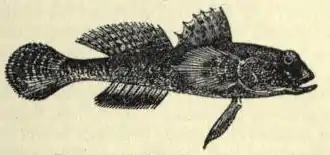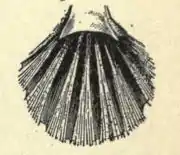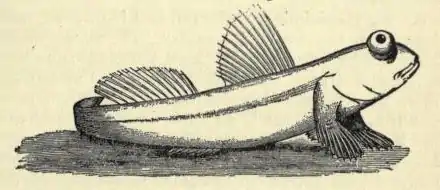GOBY. The gobies (Gobius) are small fishes readily recognized by their ventrals (the fins on the lower surface of the chest) being united into one fin, forming a suctorial disk, by which these fishes are enabled to attach themselves in every possible position to a rock or other firm substances. They are essentially coast-fishes, inhabiting nearly all seas, but disappearing towards the Arctic and Antarctic Oceans. Many enter, or live exclusively in, such fresh waters as are at no great distance from the sea. Nearly 500 different kinds are known. The largest British species, Gobius capito, occurring in the rock-pools of Cornwall, measures 10 in. Gobius alcocki, from brackish and fresh waters of Lower Bengal, is one of the very smallest of fishes, not measuring over 16 millimetres (= 7 lines). The males are usually more brilliantly coloured than the females, and guard the eggs, which are often placed in a sort of nest made of the shell of some bivalve or of the carapace of a crab, with the convexity turned upwards and covered with sand, the eggs being stuck to the inner surface of this roof.
 |  |
| Fig. 1.—Gobius lentiginosus. | Fig. 2.—United Ventrals of Goby. |
 |
| Fig. 3.—Periophthalmus koelreuteri. |
Close allies of the gobies are the walking fish or jumping fish (Periophthalmus), of which various species are found in great numbers on the mud flats at the mouths of rivers in the tropics, skipping about by means of the muscular, scaly base of their pectoral fins, with the head raised and bearing a pair of strongly projecting versatile eyes close together.